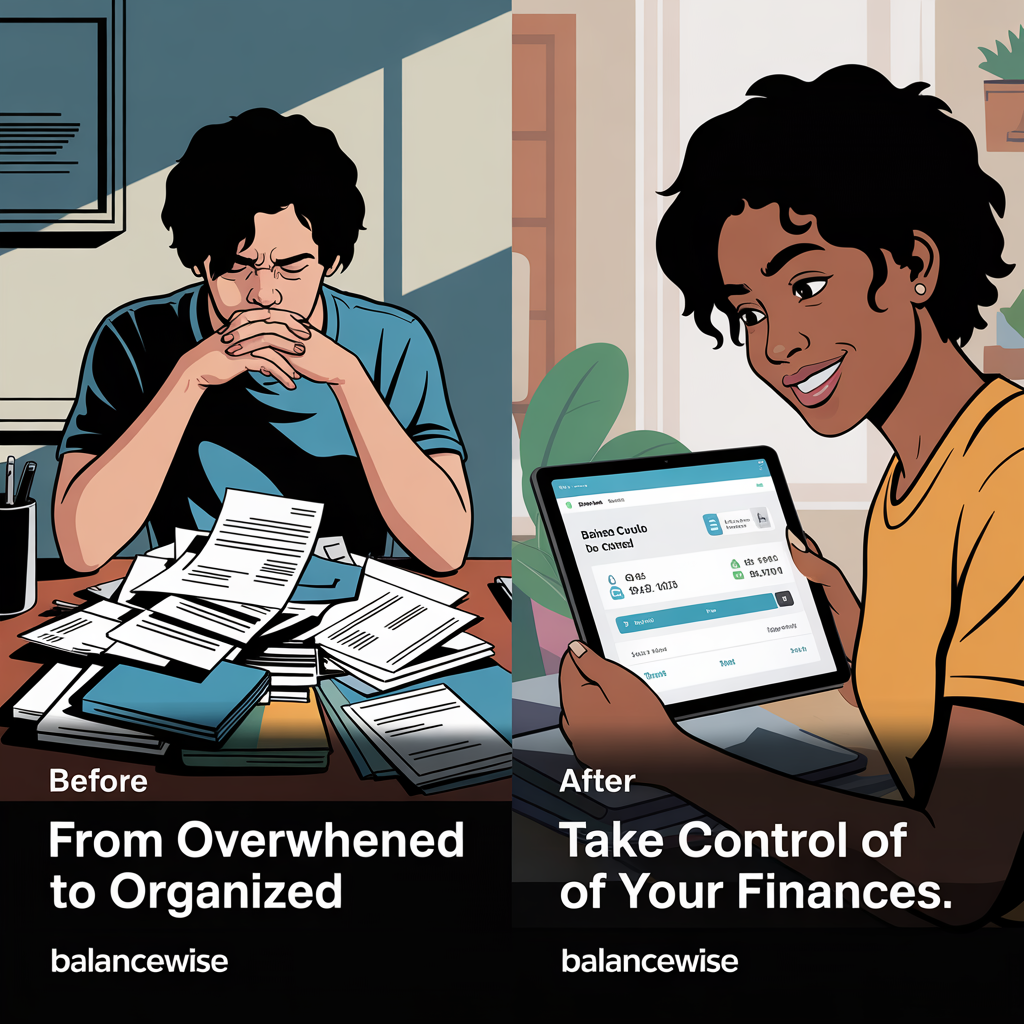7 Common Financial Mistakes Young Adults Make (and How to Avoid Them)
Navigating personal finance can be a daunting task for young adults stepping into the world of financial independence. With newfound earning power and increased responsibilities, the financial terrain includes pitfalls that many are unprepared for. According to a 2023 survey by the National Endowment for Financial Education, nearly 60% of young adults between the ages of 18-34 admit to making at least one significant financial mistake within their first five years of earning independently. This article explores seven frequent errors young adults encounter, backed by real-world examples and data, alongside proactive strategies to steer clear of these obstacles.
—
1. Neglecting to Create a Budget
One of the most fundamental steps in personal finance is budgeting, yet many young adults overlook this crucial habit. Without a clear budget, tracking income and expenses becomes impossible, leading to overspending and accumulating debt. Studies by the Federal Reserve reveal that 45% of individuals under 30 do not maintain a monthly budget, correlating strongly with difficulty managing bills and saving money.


Take Emily, a 25-year-old marketing professional, who found herself living paycheck to paycheck despite earning a decent salary. By failing to categorize expenditures, she consistently maxed out her credit card. Upon consulting a financial advisor, Emily created a simple budget using the 50/30/20 rule—allocating 50% to needs, 30% to wants, and 20% to savings and debt repayment. Within six months, she reduced her monthly debt payments by 30% and started an emergency fund.
Budgeting apps like Mint or YNAB (You Need A Budget) can simplify this process by automatically tracking spending and setting goals. Regularly reviewing and adjusting the budget allows young adults to understand their financial behavior and make informed decisions, preventing unplanned deficits.
—
2. Accumulating High-Interest Debt
Young adults often fall into the trap of accumulating high-interest debt, primarily through credit cards or payday loans. According to the Consumer Financial Protection Bureau (CFPB), the average credit card interest rate in the U.S. is approximately 17%, which can snowball quickly when only minimum payments are made.
For instance, Michael, a 28-year-old graduate student, financed his daily expenses with credit cards and often only paid the minimum due. This resulted in a $10,000 debt balance accruing over $1,500 in interest annually. By transferring his balance to a 0% introductory APR card and focusing on aggressive repayment, Michael cleared his debt within two years.
Avoiding high-interest debt starts with understanding the cost of borrowing. Opt for low-interest options, pay credit card balances in full monthly, and avoid payday loans that carry exorbitant fees. If debt already exists, consolidating high-interest balances or seeking credit counseling can prevent further financial damage.
—
3. Ignoring Retirement Savings Early On
Retirement may seem distant for young adults, leading many to delay saving. However, time is one of the most powerful allies in wealth accumulation due to compound interest. According to a Bankrate 2024 report, individuals who start saving for retirement in their 20s accumulate nearly twice as much by age 65 as those who begin in their 30s or 40s.

Consider Sarah, a 24-year-old software engineer who began contributing 5% of her salary to her employer’s 401(k) plan immediately. Thanks to employer matching and consistent contributions, she amassed a retirement fund worth $150,000 by age 35. Comparatively, her peer who deferred saving until age 30 achieved only about half that amount, despite similar earnings.
Employers’ 401(k) match programs are effectively free money; failing to capitalize on them is a lost opportunity. Starting small with automatic contributions and gradually increasing them as income grows harnesses compound interest and reduces future financial stress.
—
4. Overlooking Emergency Funds
Unexpected expenses like car repairs or medical bills can disrupt financial stability when no emergency fund exists. Despite its importance, a 2023 report from the Federal Reserve shows that nearly 40% of Americans would struggle to cover a $400 emergency expense without borrowing or selling assets.
Take the case of Jason, a 26-year-old who paid out-of-pocket for an urgent car repair. Lacking an emergency fund, he resorted to a high-interest credit card with a 22% APR. This setback delayed his ability to save for other goals. After recognizing this risk, Jason started setting aside $50 each week in a separate savings account, reaching a $2,000 emergency fund within a year.
Financial planners typically recommend accumulating three to six months’ worth of living expenses in an accessible account as a safety net. This buffer prevents debt accumulation and provides peace of mind during unforeseen events.
—
5. Making Impulsive Large Purchases
Impulse buying is a common financial misstep that significantly affects long-term wealth building. According to a 2023 research study published in the Journal of Consumer Research, nearly 75% of young adults report making impulse purchases on electronics, fashion, or travel, often leading to buyer’s remorse and financial strain.
Jessica, age 27, shared her experience of purchasing a luxury handbag on a credit offer without considering its impact on her overall finances. Though the monthly payment seemed manageable, the accumulating interest and added expenses delayed her savings goals by months.
A practical approach to curb impulsive spending is implementing a waiting period of 24 to 48 hours before large or non-essential purchases. This reflection period allows assessment of true needs versus desires. Additionally, distinguishing between needs and wants and setting spending limits within budgets can enforce disciplined spending habits.
—
6. Misunderstanding or Ignoring Credit Scores
Credit scores play a pivotal role in qualifying for loans, renting apartments, and even employment in some sectors. Many young adults either misunderstand or neglect their credit health. Experian reports that nearly 30% of consumers aged 18-24 have a credit score under 600, classified as poor credit.
Take Aaron, a 23-year-old who was denied an apartment lease due to a low credit score stemming from missed student loan payments and unopened credit cards. After consulting a credit counselor, Aaron learned to monitor his score, set up automatic payments, and use credit responsibly to rebuild his score above 700 within two years.
Understanding factors that influence credit scores—payment history, credit utilization, length of credit history, new credit, and credit mix—is critical. Regularly checking credit reports via free services like AnnualCreditReport.com helps identify inaccuracies and maintain good credit health.
| Credit Score Range | Descriptor | Impact on Loans and Rentals |
|---|---|---|
| 800-850 | Excellent | Lowest interest rates, easier approvals |
| 740-799 | Very Good | Low rates, high approval chances |
| 670-739 | Good | Average rates, likely approvals |
| 580-669 | Fair | Higher rates, potential difficulty |
| Below 580 | Poor | High rates, frequent denials |
—
7. Failing to Invest Early or Wisely
Many young adults shy away from investing due to perceived risks or lack of knowledge, opting instead to keep money in savings accounts with minimal returns. The U.S. Securities and Exchange Commission emphasizes that long-term investing, especially starting early, allows portfolios to grow through market appreciation and dividends.
For example, David, age 29, started investing $200 monthly in a diversified index fund at age 22. By the time he was 29, his investments had grown to more than $20,000, excluding additional contributions. His friend Mark, who delayed investing until 29, had accumulated less than $3,000 in returns, highlighting the compounding advantage over time.
To invest wisely, young adults should educate themselves on different asset classes, risk tolerance, and time horizons. Utilizing employer-sponsored retirement plans, robo-advisors, or low-cost index funds are accessible ways to begin. Moreover, diversifying investments reduces risks and enhances potential growth.
—
Looking Ahead: Financial Health in the Future
The financial landscape is evolving with innovations such as digital banking, cryptocurrency, and automated investing platforms, presenting both opportunities and new challenges for young adults. Being financially literate and adaptable will be increasingly vital. Learning from past mistakes and implementing prudent money management strategies sets the foundation for long-term financial security.
Programs promoting financial education, like those spearheaded by non-profits or employers, are becoming more common, reflecting an acknowledgment of the importance of early financial guidance. Young adults who embrace proactive habits—budgeting, saving, investing, maintaining credit health, and limiting debt—will be better positioned to navigate economic uncertainties.
Incorporating technology wisely, staying informed on economic trends, and committing to continuous financial learning are steps that will not only prevent common mistakes but also empower young adults to build robust and resilient financial futures. With a deliberate approach, the missteps of today can transform into milestones for financial success tomorrow.
—
References: National Endowment for Financial Education (2023). Financial Mistakes Among Young Adults. Federal Reserve (2023). Report on the Economic Well-Being of U.S. Households. Consumer Financial Protection Bureau (2023). Credit Card Interest Rates and Usage. Bankrate (2024). Retirement Savings Statistics. Experian (2023). Credit Score Trends Among Young Adults. U.S Securities and Exchange Commission (2023). Basics of Investing Guide. Journal of Consumer Research (2023). Impulse Buying Behavior in Millennials and Gen Z.
